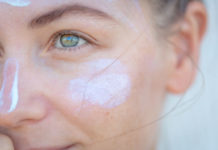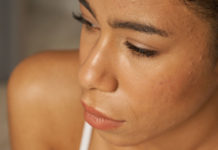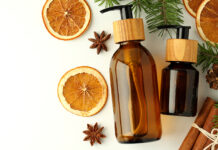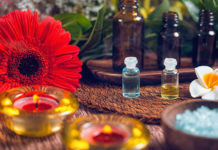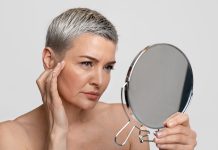
Who said roses are always sweet? Rosacea can wreak havoc on your skin. Luckily, it is relatively easy to treat. Here’s how to keep your rosacea in check and have beautiful skin again.
By Nancy Ripon
What do Bill Clinton, Mariah Carey, Princess Diana and Cynthia Nixon all have in common? They all suffer from rosacea. While dealing with the skin condition can be inconvenient, these celebrities are proof that you can still look great and have amazing skin – you just need to know a few little secrets.
What is Rosacea
Rosacea affects close to 20 million North Americans. It is most likely to occur in fair-skinned people and tends to be genetic, but anyone can get it at any time in their life (it’s most common between ages 30 to 50 though). Rosacea can also look different on different people, but characteristics tend to include: redness on the cheeks, nose, chin and forehead; acne-like bumps or pimples on the face; a tendency to blush easily; tight, dry or itchy skin on the face; a burning 34 vivamagonline.com / holiday 2013 or stinging sensation on the face; visible blood vessels on the face; and irritated eyes. Because of its appearance, rosacea is sometimes referred to as adult acne. While both conditions can cause pimples, rosacea requires different therapy. In fact, some acne treatments can make it worse. Because of the chronic nature of rosacea it rarely goes away by itself. “With time rosacea gets worse so it’s important to seek treatment as soon as possible,” says Dr. Lisa Kellet, a Toronto-based dermatologist.
Rosacea Triggers
One of the most important steps in keeping your rosacea in check is to learn your triggers and try to avoid them whenever possible. Flare-ups can be provoked by a wide range of environmental, physical, and emotional factors and rosacea triggers vary from person to person.
While rosacea is not a by-product of alcohol abuse, as little as one drink can aggravate flare-ups. Red wine tends to be especially problematic. Other triggers include: extreme heat, exercise, and stress.
“Avoiding triggers can be extremely difficult,” says Kellet. That being said, it’s still important to identify your triggers. Keeping a rosacea journal might be useful if you are having trouble pinpointing what makes your rosacea worse. Knowing your triggers when you visit your dermatologist will make it easier for them to develop a plan to keep your rosacea in check.
Once you’ve identified triggers you still need to monitor what causes your flare-ups. “New triggers can pop up over time,” says Kellet.
Managing your Rosacea
Rosacea can’t be cured. It can, however, be treated. Because rosacea gets worse over time if left untreated, the first thing you should do is visit your dermatologist. “Treatments vary depending on your symptoms and triggers,” says Kellet. For example, topical treatments can be very effective in treating acne-like papules, but they do nothing for redness or visible blood vessels. Likewise, Accutane and certain antibiotics can diminish papules but would also be ineffective in treating redness or blood vessels. Photothermolysis, a laser therapy, can be very effective in treating the later, however. “The lasers warm the blood vessel walls and help shut them down,” says Kellet. Lumenis One is another great option for non-papular rosacea. “Multiple wavelengths of light can help soothe the skin,” says Kellet.
Once your condition has been properly diagnosed and your triggers have been identified there is a lot you can do on your own to keep your rosacea in check. Finding the right skin care products is essential. Rosacea-prone skin tends to be sensitive, so products with alcohol and fragrance can irritate your skin. Witch hazel, menthol, peppermint and eucalyptus oil also tend to be triggers. People with rosacea should also avoid scrubs and toners and products made to treat acne.
Ideally you should cleanse your skin with alcoholand fragrance-free products; then rinse with lukewarm water, and blot your face dry with a soft cotton towel. Also, always wear a broad-spectrum (UVA and UVB protection) sunscreen with an SPF of 15 or higher. Like Kellet said, avoiding triggers can be extremely difficult. That being said, aim to avoid extreme weather whenever possible. Cozying up by a fire or enjoying a hot bath or sauna can be overwhelming. If you have to go out in the cold, cover up with a hat and scarf.
If exercise is a trigger, try to workout indoors in a wellventilated area – preferably by a fan. If you’re training outdoors, do so when the sun is at its weakest (early morning or evening) and make sure you rehydrate often. With a few simple lifestyle changes you may find that your rosacea is much easier to handle than you once thought. VM









